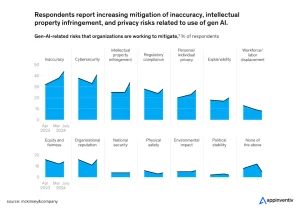
An effective system of internal controls is crucial in mitigating fraud risk in any organization, and employees should receive clear communication regarding its policies as well as potential repercussions for breach.
Preventative internal controls help deter fraudulent activity by decreasing the opportunity element of the fraud triangle, such as segregation of duties and back up procedures (reconciliations). Meanwhile, detective controls may identify issues which have already taken place through audits.
1. Segregation of Duties
Segregation of duties is an effective internal control that helps reduce fraud by requiring more than one individual to fulfill each step in a transaction – this includes counting, recording, authorizing, custody and reconciliation.
Separating these tasks reduces the chance of one person holding too much power over a process and increases the likelihood that something out-of-the ordinary would be noticed and investigated. Furthermore, policies to track vacation balances and require job rotation reduce opportunities for employees to collude together in committing fraud or stealing assets from fellow coworkers.
Compliance with industry standards and regulatory frameworks like Sarbanes-Oxley (SOX) requires that duties are clearly separated, which safeguards accounting records while helping avoid expensive fines or legal complications. A strong segregation of duties ensures integrity for accounting records while providing protection from legal liabilities or fines.
2. Reconciliation
Reconciliation refers to the process of matching transactions recorded in accounting records with those recorded externally by documents or entities. Reconciliation plays an essential role in combatting fraud as it allows banks to validate that cash receipts and disbursements recorded match with those seen in accounting records.
As is true with all control systems, no internal control system can guarantee 100% effectiveness or eliminate all problems. A variety of factors can reduce its efficacy including human errors with control responsibilities, breakdowns in processes, management override or collusion among individuals.
Businesses can strengthen their controls through various strategies. This may include conducting a risk analysis to identify areas requiring further consideration or adding monitoring activities. It’s also possible to use connected risk technology that helps identify unexpected issues quickly and respond swiftly.
3. Audit
Even though internal controls are essential to business operations, they are not 100% foolproof. Even well-designed controls may be bypassed through human error, judgment or management override; fraudsters also possess considerable talent at finding ways to bypass business systems.
Risk analyses should form an essential part of every company’s internal control system, helping managers to determine which business processes and applications need to be audited as well as their scope of testing. Internal audits should focus on areas of potential risk rather than being detective in nature; preventive controls such as segregating duties, documenting transactions, reconciling bank statements and using physical safeguards to secure cash, checks, computers and credit/debit cards can help protect them. Furthermore, using “for deposit only” stamps on all incoming checks requires two signatures upon each incoming check is another essential preventive control measure for protecting companies from becoming detective.
4. Security
Strict documentation rules can help companies combat fraud. A thorough documentation program might include expense reports, phone logs and records, vehicle and company equipment logs and receipts as well as an established hiring process with background checks and reviewing prior employment histories.
Control activities represent a broad category of management decisions which provide assurance that established objectives and goals will be fulfilled. They typically come in the form of preventative or detective controls.
An effective internal control system consists of the elements listed above and follows an established framework such as COSO (Committee of Sponsoring Organizations of the Treadway Commission). Unfortunately, even an effective system cannot guarantee total accuracy; factors that limit internal controls include judgment – managers can make poor choices; breakdowns – systems may stop functioning correctly; personnel with control duties who fail to fulfill them effectively.
5. Compliance
Establishing effective internal controls can assist businesses of all sizes to protect their assets and financial integrity while creating a positive working environment. However, it’s critical that these systems be regularly assessed and updated in line with changes to business processes and practices.
To minimize fraud risk, divide up tasks so no single employee has control over critical transactions, obtain management approval for significant transactions, and reconcile bank statements, accounts receivable, payable ledgers and reconcile bank statements regularly to identify discrepancies. Furthermore, ensure physical assets and data access is limited by locking away cash, checks, credit cards and petty cash funds; don’t overreplenish these either; replenish only as necessary (ie one week’s supply) so as to maintain an audit trail and prevent misappropriation.







